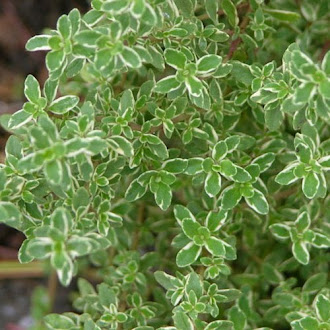So I wanted to show my appreciation, admiration and respect to the chefs I studied under and learned some tough lessons from but some great experiences as well. First to all my Chefs at Le Cordon Bleu in Scottsdale, Las Vegas and in London, there's way to many to name but I have to name one who taught me the value of patience and listening Chef Wendy Jordan, she studied under Chef Susan Spicer and Emeril Lagasse, she and her husband Michael own the renowned Rosemary's restaurant in Las Vegas, I was privilege enough to have her as a instructor in school. Chef Stephan Marshall, who gave me a externship at the Ritz Carlton while I was still in the middle of school even though that was not their policy to do so, I learned so much from working there about service and guest appreciation, I can't say enough about the experiences and skills I learned with The Ritz Carlton. Perhaps the toughest and in return the most rewarding cooking lessons I learn came from Chef Andre' Rochat and Chef Jacques Van Staden of Alize and Andre's French restaurants in Las Vegas. Chef Andre is a native of France and a life long student and teacher of classical French cuisines and with his Michelin starred restaurants he demanded perfection from his staff and I'm the better for it. Chef Jacques was the Chef de Cuisine for Chef Andre' and brought the same dedication and sense of responsibility to this great profession. I am dedicated to taking the lessons I have learned from these respected chefs and doing my part to continue the tradition of excellence in my life and food. I included their bios for you to take a peek at.
Wendy Jordan

Chef Jordan attended The Culinary Institute of America in Hyde Park, New York, where she not only earned an Associate of Occupational Science degree, but she also met her future husband, fellow chef and restaurant partner, Michael Jordan. After graduation, the two traveled to Europe to explore other cultures and cuisines, forever influencing their style of cooking. In Louisiana, Chef Jordan worked with the renowned chef Susan Spicer of Bayona, and later with another great chef of the region, John Neal of Peristyle, where she went on to assume the role of Executive Chef. The May 1999 Las Vegas opening of Rosemary’s Restaurant was the fulfillment of a lifelong dream for owners Chef Wendy and Chef Michael; Rosemary’s has since won awards as well as mentions in many periodicals and television programs and is considered to be one of the finest culinary destinations in Las Vegas. After serving as Chef de Cuisine at Rosemary’s for 5 years, Chef Jordan joined the faculty of Le Cordon Bleu College of Culinary Arts Las Vegas and currently teaches Introduction to Culinary Skills I.
Stephen Marshall

Executive Chef Stephen Marshall oversees the food and beverage of each of the resort’s dining outlets including Medici Café & Terrace, Firenze Lobby Lounge, Galileo Bar and the resort’s pool restaurant and the numerous banquets for which he creates one-of-a-kind menu concepts. His cooking philosophy is to stay true to the seasonal ingredients and protect the integrity of the food by keeping the process simple and not masking the flavor. As a result, he creates dishes with a lighter, healthier approach that use less butter, more olive and infused oils and relies heavily upon the food’s natural flavors.
Marshall is a native of San Francisco. Prior to joining The Ritz-Carlton, Lake Las Vegas, Marshall was the driving force behind the specialty cuisine created for two annual events at The Ritz-Carlton, Kapalua including “Celebration of the Arts,” for which he received international coverage on E! Entertainment Television and the annual Mercedes PGA Championship at Kapalua. He is also an alumnus chef for several sister properties including Cancun, Mexico; San Francisco, Laguna Niguel and Marina del Rey, Calif.
André Rochat

André Rochat is Las Vegas' original celebrity chef. Long before Wolfgang Puck, Emeril Lagasse and Charlie Palmer arrived in Las Vegas, Rochat was providing the kind of world-class cuisine and sophisticated service that easily satisfied the most discriminating high rollers. And today, although he shares the limelight with some of America's most celebrated toques, Rochat remains the dean of Las Vegas chefs, with three award-winning venues and a dedication to standards as high as the 56th floor perch of one of his grandest restaurants, Alizé, which overlooks the city from the top of the Palms Casino Resort.
Rochat, born in the French Alps, where his family owned a charcuterie in the village of La Rochette. After learning the business—beginning at the tender age of five—and inheriting the gift of cooking from his mother, he left home at 14 to apprentice at Leon de Lyon, the renowned Michelin two-star restaurant in the heart of Lyon, in the region known as the cradle of French gastronomy. Later, he took a job at the Hôtel du Mont-Blanc in Megève, not far from home, and followed that with a military assignment as chef to a French naval commander, a prestigious appointment for a rising culinary star.
In 1965 Rochat departed his native France, arriving in Boston with nothing but $5, a bagful of knives and a head full of youthful dreams. After cooking at several prestigious East Coast hotels including Boston's Charter House and Washington's Mayflower and enjoying a stint as an in-flight chef for United Airlines, he drifted west, eventually landing in Las Vegas—a long way from La Rochette. In 1973 he opened a successful business, Savoy French Bakery, after observing the absence of an authentic French boulangerie in Las Vegas.
In 1980, Rochat founded his cozy French restaurant, André's, which would eventually become one of Las Vegas' most venerable and acclaimed establishments. Despite its location in downtown Las Vegas, word quickly spread that André's, with the rustic ambiance of a French country auberge, was the place for an intimate gourmet dinner in the burgeoning metropolis, and the restaurant gradually expanded to its current capacity of 180. Since 1980, André's has set the standard for culinary excellence in Las Vegas, and even the much-publicized arrival of celebrity chefs from L.A., New York and San Francisco didn't' detract from the restaurant's superlative reputation and immense following. As LVCitylife.com put it, "Andre's is what people think of when someone says, 'take me to the nicest place in town'."
In 1997, Rochat opened a second location on the Strip, André's at the Monte Carlo, an exclusive 60-seat restaurant with the trappings of an elegant château. And then, in 2001, he opened Alizé on top of the Palms Casino Resort, the hip hotel that has profoundly altered the dynamics of Las Vegas nightlife. With his three highly acclaimed restaurants, Rochat remains at the top of the Las Vegas culinary hierarchy and seems to be a chef truly at peace with his choices in life. Described by his peers as having no ego—a rare quality in a successful chef—he is regarded as a superb mentor to younger talents.
Rochat, a passionate collector, maintains one of the most extensive and exclusive collections of Wine, Armagnacs, Cognacs, vintage Ports and spirits in the world, displayed throughout his three fine restaurants—yet another reason discriminating diners enjoy spending an evening with the legendary chef who put Las Vegas on the culinary map
Jacques Van Staden

Thirty-seven-year-old Jacques Van Staden was born in Pretoria, South Africa, where his passion for cooking was awakened while assisting his Italian grandmother in the kitchen at age seven. By the time he was eleven, he was cooking the family’s big Sunday meals and knew he wanted to be a chef. At 14, Van Staden was learning the craft at a local French restaurant while his father thought he was out playing rugby. After graduating high school, he sold his car to afford airfare to America, where being a chef was considered a more acceptable career goal. In 1990 he arrived in Washington, D.C. and took a job cooking at the South African Embassy while attending L’Academie de Cuisine in suburban Maryland.
Van Staden’s first job as a professionally trained chef was at the historic Occidental Grill, a power-dining venue just around the corner from the White House (Washingtonians refer to it as “the second most famous address on Pennsylvania Avenue”). Next he moved on to Jean-Louis, the restaurant of the late chef Jean-Louis Palladin, a rarefied venue in the famous Watergate Hotel, where he would quickly advance to Sous Chef under one of America’s most revered toques. Beyond serving as a mentor, the gregarious Palladin would become Van Staden’s greatest inspiration in the culinary world. He next worked as Executive Sous Chef under another master, when in 1995 Gray Kunz opened a Washington, D.C. branch of his renowned New York restaurant, Lespinasse. At this bastion of haute French cuisine, Van Staden continued to refine the classical techniques he developed at the Watergate.
In 1996, Van Staden was tapped by yet another one of D.C.’s most influential restaurants, Citronelle, where chef/owner Michel Richard, one of the leaders of the California-French movement, appointed him Executive Chef. This distinguished Georgetown restaurant offered the young chef an exciting opportunity to incorporate contemporary influences into traditional French cuisine. Yearning, however, to own his own restaurant, Van Staden opened a casual Mediterranean establishment called Café Olé, specializing in tapas, and subsequently returned to the Watergate as Executive Chef for the entire hotel, managing 250 employees and a $10 million food and beverage budget.
When the Aladdin Hotel lured him to Las Vegas in 2000 to work as Executive Chef at its high-end London Club, he was in a position to be noticed by André Rochat, who persuaded him to come work as Chef de Cuisine at Alizé at the Top of the Palms in 2003. That fateful decision to sell his car in Pretoria to buy airfare to America turned out to be a wise move for the youthful Van Staden, who has already been nominated for a “Rising Star Chef of the Year” award from the James Beard Foundation. Chef Jacques is now Executive Director of Food and Beverage Celebrity Cruise Lines.













































